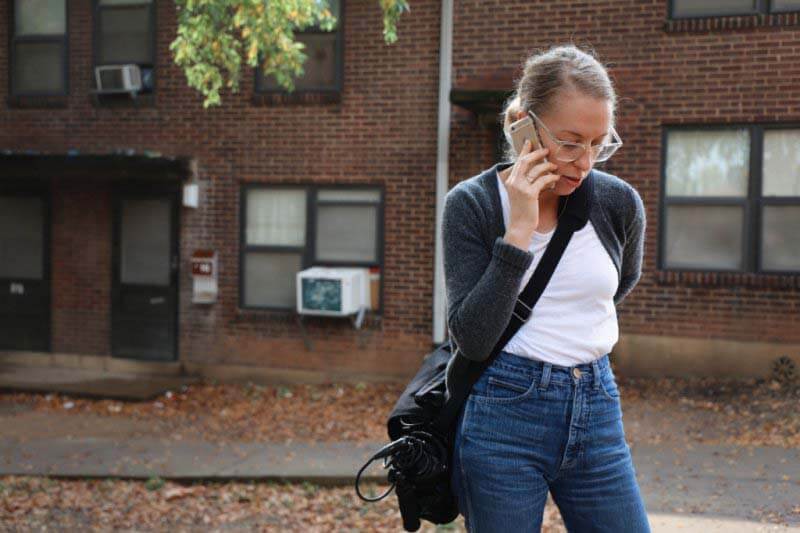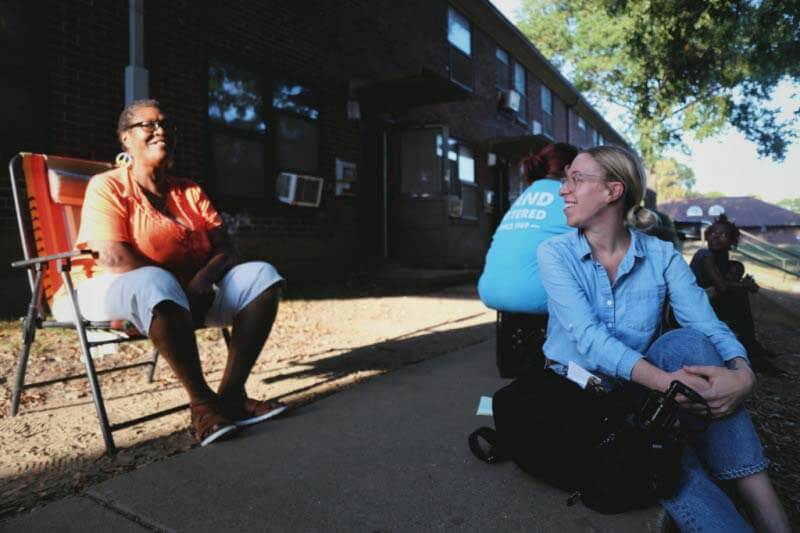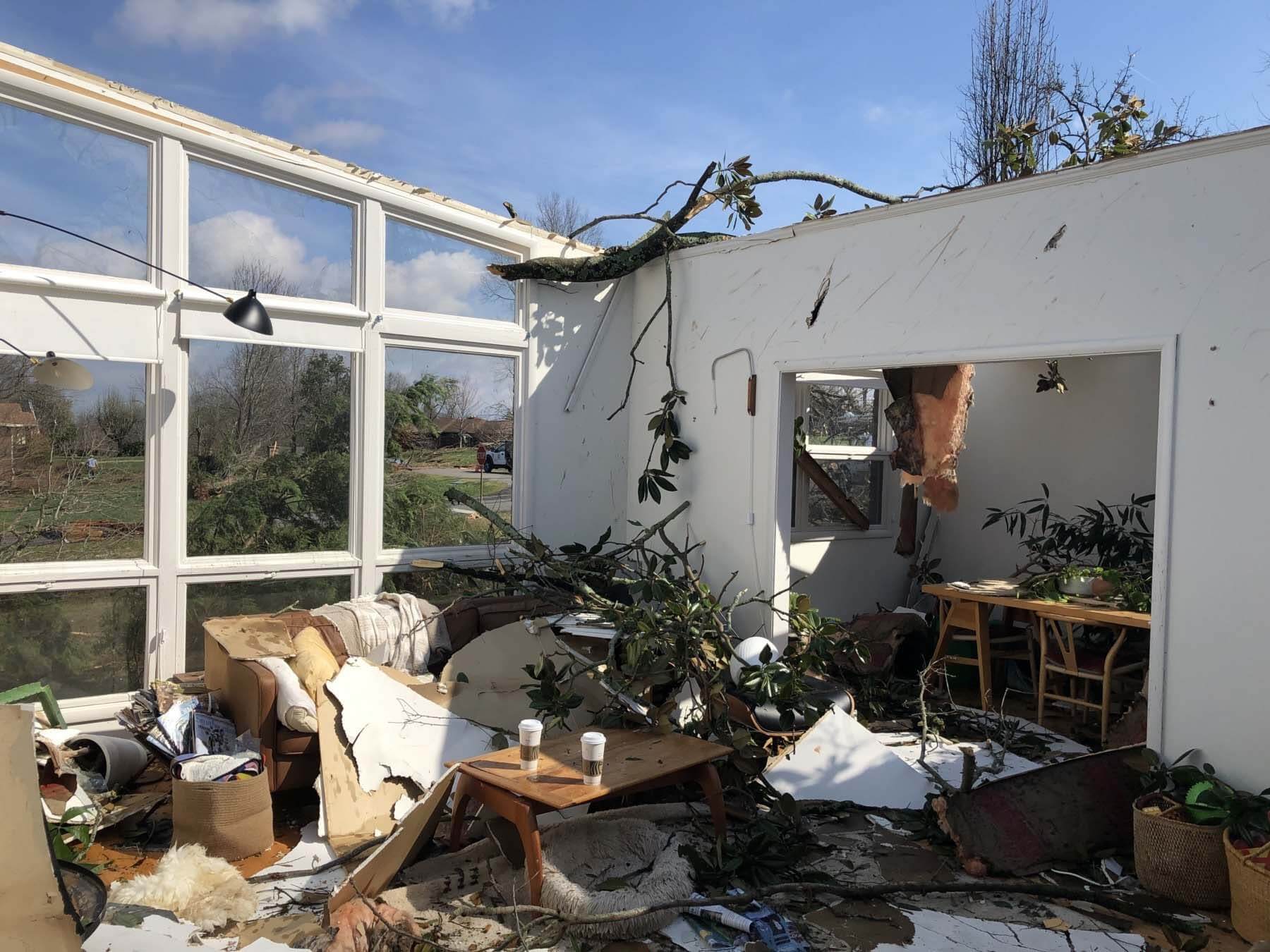Through her thought-provoking WPLN podcast, “The Promise,” journalist, producer and host Meribah Knight offers a candid and culturally significant depiction of inequality in Nashville. Her raw accounts of life at the James Cayce homes and East Nashville’s Warner Elementary incite social awareness, no matter your race, culture or creed. The NYU graduate, who majored in African American history and racial politics, initially tried her career luck in New York City, then attended journalism school at Northwestern. Later, she stumbled into a position at the Chicago News Cooperative, an ambitious experiment from The New York Times that allowed her to spread her wings and learn the journalism ropes. Meribah’s love of radio entered the picture after she and her husband (a photojournalist) moved to Nashville, and her immersive and narrative-driven reporting quickly caught the attention of the public radio station. Despite a harrowing experience in the March 2020 tornado, her positivity is infectious as she continues her pursuit of truth, delivering a much-needed reminder for self-reflection and advocacy for racial justice within our community. Please welcome the inimitable Meribah Knight.

Can you tell us about your background?
I grew up in Cambridge, MA, right across the river from Boston. My mom is a children’s book author and writes young adult fiction. My dad was a photographer and documentary filmmaker. He’s retired now, but I’m very much a product of the two of them in terms of growing up with stories. My world was filled with stories: the ones that my mom was concocting in her mind and the ones that my dad was following as a journalist in the medium of film, video and TV. I didn’t know what I wanted to be; I wasn’t even on the high school newspaper.
My growing up experience was really diverse because Cambridge was an incredibly diverse city, both racially and socioeconomically. There was rent control; it was super progressive … I grew up going to a bilingual elementary school from kindergarten through eighth grade because we had such a large Haitian population. So, I grew up in this little utopia of inclusion and diversity. It was really lovely.
RELATED: Meet Nashville’s Former (& First Female!) Sheriff, Gayle Ray

Can you tell us about “The Promise” and what inspired it?
In short, both seasons 1 and 2 are about inequality and how it manifests in our daily lives within our neighborhoods. I think a lot of people want to peg it as: the first season is about public housing in East Nashville and the second season is about public education. But really, if you distill it down, they’re about inequalities in our world and our society.
My racial politics and African American studies background has always worked its way into my interest and coverage, and I came on at the station as a “growth and development reporter.” I decided to say that meant inequality — where are we seeing the rub of development? Where are we seeing neighborhoods that are both thriving and also disenfranchising people? I gravitated toward East Nashville because it was a fertile ground for that. I first came to covering public housing and the James Cayce homes, which is where the first season is set, after the police shooting of Jocques Clemmons in 2017. It was a very high-profile shooting of a Black man by a white police officer after a traffic stop, where they alleged that he was carrying a gun. I realized it was kind of Nashville’s Michael Brown or Ahmaud Arbery. In some cases, the circumstances were different, but the pump was primed to react to the shooting, so I started to report more on it. I became immersed in the neighborhood, and it was so intense because you have this huge block of public housing that’s right next to new homes that are selling for $500,000. What a strange juxtaposition of this world that feels so isolated, where the police are there enough to shoot this Black man after he rolls through a stop sign. It’s a place that feels left behind by Nashville’s growth. Then, you’ve got the other side of the neighborhood, which feels so far away, but it’s on the other side of the street.
Two-thirds of the residents who live in the James Cayce homes are kids under the age of 18. The second season started because as I was reporting there, I started to see where they were going to school and who they went to school with, and I was like, “This neighborhood is divided, not just in where we live, but also in where we send our kids to school.” If I was going to continue exploring the idea of division and inequality as it speaks to race and socioeconomics, telling that through the school seemed really important and vital. It’s something we can all identify with because we’ve all been in the classroom. In a way, the second season posed a much more provocative question: “Why are our children so divided in these classrooms?” I felt like there was a lot of hypocrisy. People were saying they wanted inclusion and to live in East Nashville for the diversity and that they were progressive, and all of these things that sound great. And I think they really believed that. But then I saw they weren’t practicing those ideologies. They were sending their children to schools that felt really separate from the rest of the neighborhood. They didn’t represent the community as a whole. One story leads to another.

What has the response been?
The response has been amazing. I honestly thought I would be flooded with angry emails from people who felt I was attacking them for no reason — that they weren’t part of this problem. But people have been so embracing of it. In some ways, it’s the best possible time for a podcast like this. I saw an opportunity to push people beyond their comfort zone in a way that could allow them to be more self-aware. I didn’t want to yell at anyone and say, “You’re a racist,” but rather, “Hey, let’s think about the decisions we’re making. Let’s think about the history that came before us and make more thoughtful decisions about our children that are founded on equity.” I thought I would have to hold people’s hands. It’s difficult to say, “Hey, you may be a self-identified liberal progressive person who values diversity and buys your white child Black dolls or books with Black people in them, but are you actually sending your child into spaces with children who look different from them? Are they really making friendships and connections with people who are different from them? And what is your responsibility as a white person with privilege? What can you do in your own power to level the playing field?” When George Floyd happened, suddenly, the white community was asking themselves these tough questions. People were saying, “This isn’t just about helping Black people; this is about releasing some of your own privilege and power so it can be spread around.”
When I saw these two schools that are a little over a mile apart, and they’re literally the inverse of each other racially and socioeconomically, I thought, This is how I tell that story. I became a parent while I was reporting this, and it changed me so much. It’s definitely full of complicated ideas, some of which are very uncomfortable, but on a fundamental level, I don’t know how we begin to heal our racist past to bridge the divide and create real equity if we won’t even put our children into the same learning environment.
You lost your home in the March tornado. Can you tell us about that?
It turned our world upside down. I never got the tornado alarm; I was sleeping. My husband was up because he works for The Tennessean, and he thought he would have to cover it. He woke me up to say, “There’s a tornado on the ground. You may have to take Errol (our then 18-month-old son) to the basement.” I was like, “It’ll pass,” and then I dozed back off. He woke me back up and said, “No, I see it.” We had a west-facing window, so you could see towards East Nashville. Suddenly, the tornado changed course, and it was coming at our house really fast. I heard him go, “Get Errol. Run!” I scooped him up and started running down the hallway towards the basement stairs. All the windows were cracking and breaking. Then, when I got to the top of the stairs, our roof went. I didn’t see it, but I was getting hit with lots of debris, and I heard the most horrible sound. It was so scary. I was shielding Errol, and I ran down to the basement. A few minutes later, when I was sitting there huddled with our child, I’m like, “What happened?” and Andrew said, “You don’t want to go up there.” It was a mess.

What is the best piece of advice you’ve ever received?
My mom, who’s one of the hardest workers I’ve ever known, has always said, “You have to keep moving forward and find your way through the work. Don’t let your fear and insecurities paralyze you.” I took from it to keep putting one foot in front of the other. The inspiration will come through the work.
The other really good advice is from my mentor, Alex Kotlowitz, a wonderful journalist, who told me to always approach my work with as much empathy and self-awareness as possible — self-awareness is the best ingredient for a journalist. Actually, it’s the best ingredient for life. It’s so powerful because it allows you to understand your role and everyone else’s role. It brings more empathy, thought, care and perceptive observations.
Outside of faith, family and friends, what three things can’t you live without?
Wine, avocados, and The New Yorker.
**********
For more of the best people and places in the South, make sure to follow us on Instagram!


















